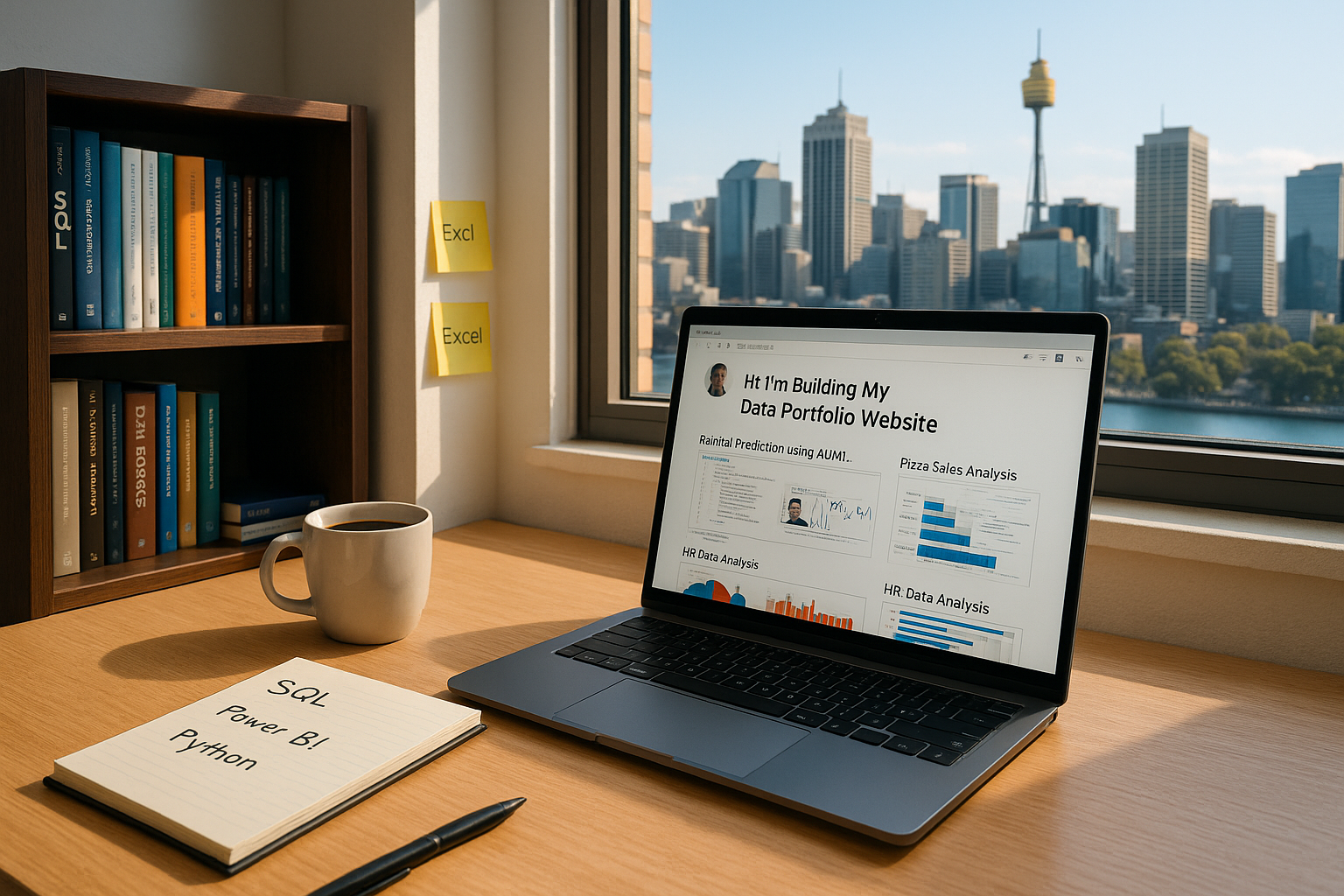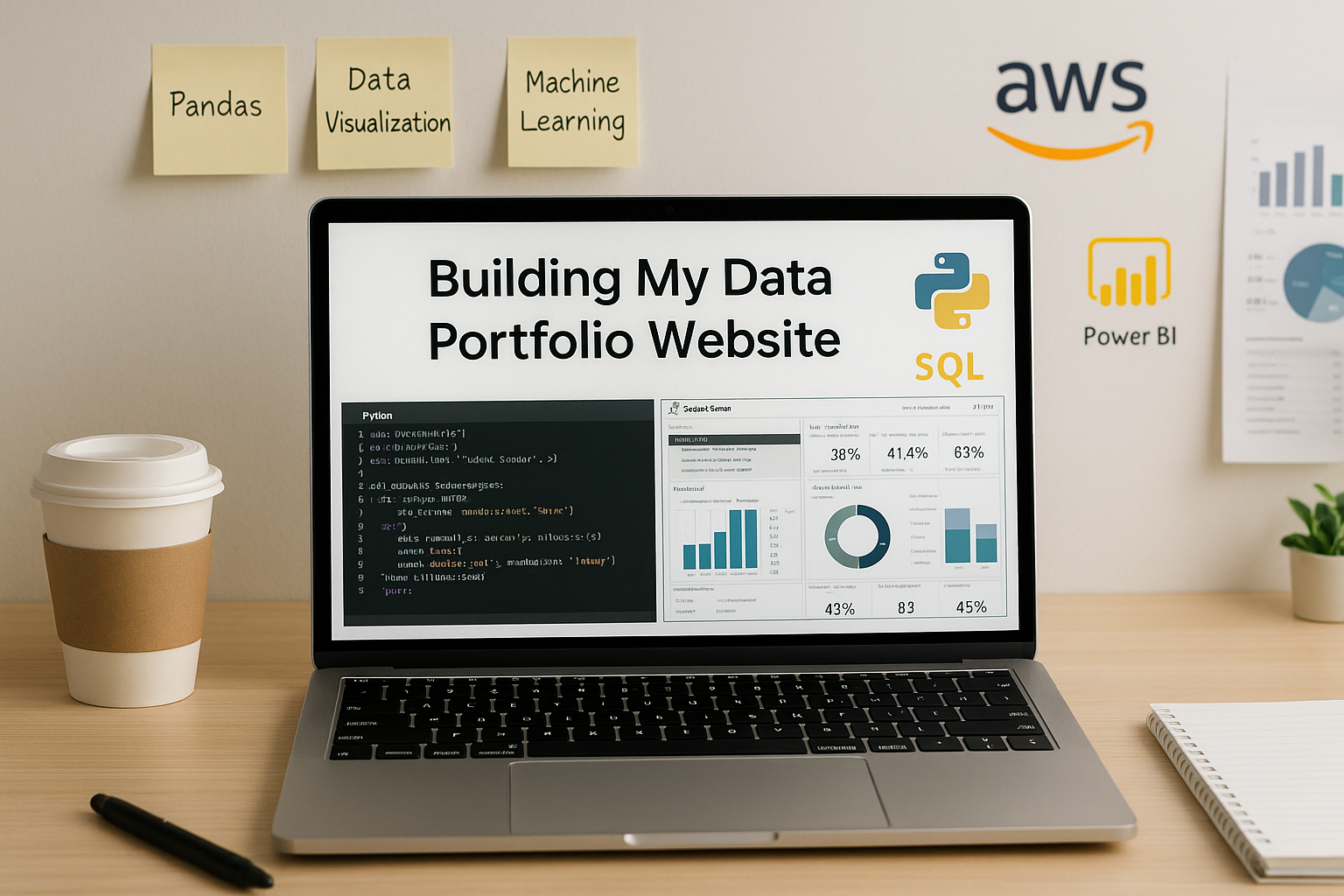How I’m Building My Data Portfolio Website

When I decided to pursue a career as a Data Analyst after completing my Master of Data Science, I knew that building a strong portfolio website would be very important. Not just to showcase my projects, but also to tell a story about myself: who I am, what I can do, and how I am progressing. In this blog, I want to share how I’m building my portfolio website, the steps I’ve taken, the projects I’m including, and my thought process along the way.
Why Build a Portfolio Website?
As someone who’s working hard to start my career as a data analyst in Australia, I quickly figured out that just a resume wouldn’t be enough. Employee want to see real evidence that I can work with data, build dashboards, find insights, communicate it, and solve actual business problems. Creating a portfolio website felt like the best way to bring all my work together in one place. It’s my opportunity to stand out, make a strong first impression, and show that I’m genuinely committed to building a career in data.
Planning My Website
Before starting this project to build the portfolio, I asked myself:
- What tools should I use?
- What kind of projects should I showcase?
- How should I organize all the information?
I decided to keep the website simple, clean, and easy to navigate. Since I have some experience with HTML, I chose to use a template and edit it manually rather than relying on website builders. I plan to host it on GitHub Pages as it's free, easy to update, and looks professional for tech portfolios.

Building the Website: My Current Progress
Since I have chosen a HTML-CSS based template, I have control over the design and the content. I'm organizing projects into individual sections or pages so visitors can easily dive deeper into any project they’re interested in.
I plan to also include:
- A short About Me section highlighting my background, skills (Python, SQL, Power BI, Excel, AWS Cloud Practitioner), and career goals.
- A contact section with links to LinkedIn, GitHub and email.
Challenges and What I’m Learning
Along the way, I’ve learned a few important things:
- Every project should clearly explain the problem, how I approached it, and what results I achieved.
- Using clean layouts, simple language, and a professional design helps the whole site feel more polished.
- Too much information can overwhelm people, but too little might not do justice to the work I’ve done.
What’s Next?
Once the basic version of my website is live, I plan to:
- Continuously update it with new projects and certifications.
- Using clean layouts, simple language, and a professional design helps the whole site feel more polished.
- Write short blog posts (like this one!) about what I’m learning.